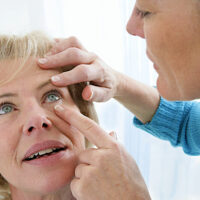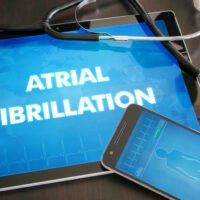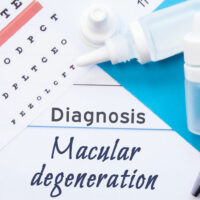7 viral infections and their associated warning signs

A virus invades living, normal cells and uses them to multiply, leading to a viral infection. Someone who has a viral infection may notice various signs and symptoms that might be similar to a bacterial infection. However, mistaking the signs for another illness could interfere with its associated treatment plan. Therefore, one must be mindful of the early warning signs of viral infections, seek a professional opinion, and take the necessary steps to fight viruses.
Here are some common viral infections and their associated symptoms:
1. Common cold
The common warning signs of a common cold include a runny nose, red eyes, fatigue, a fever, a cough, and a hoarse voice. An individual might get the infection when a virus enters the respiratory system. This might occur when the person touches an infected surface, such as a grab rail or table, or shakes hands with another individual who is ill. This will spread the viral infection if the individual touches their nose, eyes, or mouth. This illness is one of many upper respiratory infections that a person may experience. Other infections in this region with similar signs include epiglottitis, pharyngitis (sore throat), sinusitis, and laryngitis.
2. Viral gastroenteritis
Some people might contract an intestinal infection called viral gastroenteritis (stomach flu). An individual might develop the infection by coming into contact with an infected person or consuming contaminated water or food. Common symptoms of the viral infection include stomach cramps, nausea, watery diarrhea, and fever. The signs may last a day or two, but some people might experience the condition for up to 14 days. People with a healthy immune system may recover without complications, but those with weaker immunity might experience severe effects of the stomach flu. Therefore, adults should speak to a healthcare expert if they cannot keep liquids down for 24 hours, are vomiting blood, or notice blood in their bowel movements. Even if the symptoms are not severe, an individual must seek an expert’s diagnosis.
3. Influenza
Influenza, also known as the flu, is one of the most common viral infections in the country today. Influenza spreads easily from one person to the next when they cough or sneeze, and vaccination is usually the ideal way to prevent the disease. As for its symptoms, one may experience an acute onset of cough, sore throat, body aches, fatigue, and fever. The symptoms may occur spontaneously, with a recovery time ranging from a few days to less than two weeks. However, if one leaves the symptoms untreated, the condition could get worse and trigger complications such as pneumonia. Therefore, it is imperative to seek the opinion of a healthcare provider immediately after getting the flu.
4. Yellow fever
Yellow fever is an infection categorized under viral hemorrhagic fevers, which may affect how the blood clots. The virus may also weaken blood vessels and lead to excessive and uncontrolled bleeding. Yellow fever is transmitted through mosquitoes. Mild symptoms may include body aches, a fever, fatigue, and a headache. One may also notice serious complications like shock, bleeding, a very high fever, and organ failure. One can get vaccinated and avoid mosquito bites to reduce the risk of yellow fever. Experts also recommend getting lots of rest and drinking plenty of fluids to feel better. One could also take other preventive measures, such as using repellent, using a bed net, and wearing long clothing to repel mosquitoes.
5. Measles
Measles is categorized as an exanthematous viral infection that affects an individual’s skin. The virus is highly contagious and may spread from one person to the next when the person breathes in airborne respiratory droplets after the infected individual coughs or sneezes. People who develop measles usually become contagious two days before the symptoms surface. These individuals may remain infectious for at least five days. One could identify the onset of measles through signs including a spotty rash, loss of appetite, a fever, and a cough. Other symptoms of the viral infection include red spots that might join together, especially in areas of the face. One might benefit from various treatment options for mild cases of measles. Still, the most viable solution is bed rest and immunization to prevent the spread of the virus and any further health conditions.
6. Human papillomavirus (HPV)
The human papillomavirus (HPV) is transmitted through direct skin-to-skin contact. While there are more than 30 strains of the virus that may infect the genitals, only some forms are considered “high-risk” because they can progress to cervical cancer. Getting vaccinated against HPV and receiving regular Pap smears could prevent cervical cancer. Common signs of the human papillomavirus include warts in the genital area, which are rough, cauliflower-like lumps that grow on the skin. An individual should note that while the virus may be transmitted from one person to the next immediately, the symptoms may surface weeks, months, or years later. Therefore, one must get regular health checks to identify any signs of such viral infections and get them treated at the earliest.
7. Polio
Sometimes, an individual might be affected by a neurological infection such as polio, which affects the central nervous system, including the brain and spinal cord. The poliovirus causes the disease and affects the throat and intestines, leading to flu-like symptoms. If left untreated, the virus could spread to the brain and spine, causing paralysis. While most people do not experience any symptoms of the polio virus, some people might develop mild signs such as fatigue, fever, headaches, diarrhea, a sore throat, and vomiting. Some people might also be affected by non-paralytic poliomyelitis, which could lead to stiffness of the neck, severe headaches, sensitivity to light, and a feeling of pain or pins and needles in the arms and legs. One should get these signs checked immediately by a healthcare expert if they have no known underlying health conditions. The most common method to prevent polio or reduce the risk of infection is through vaccination.





